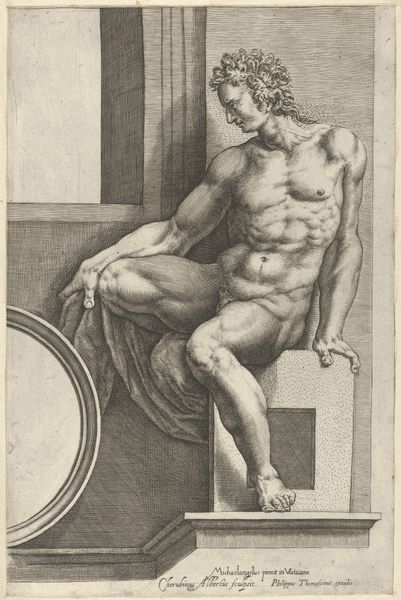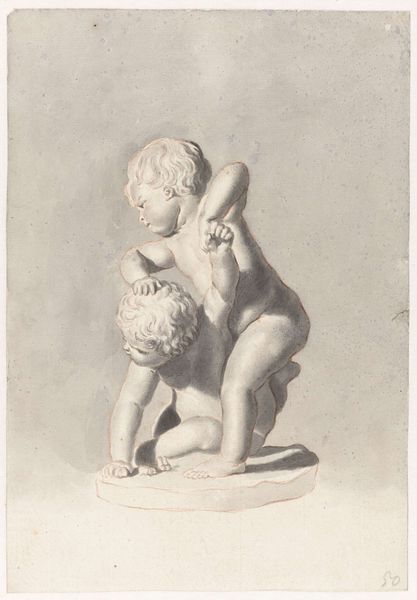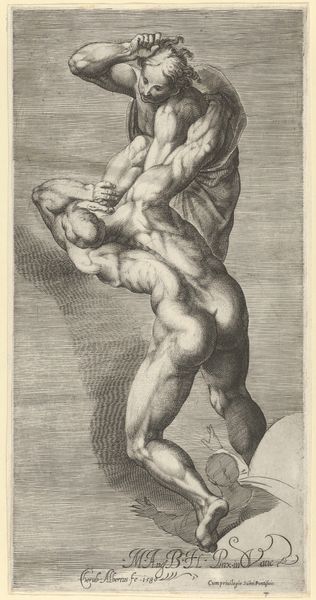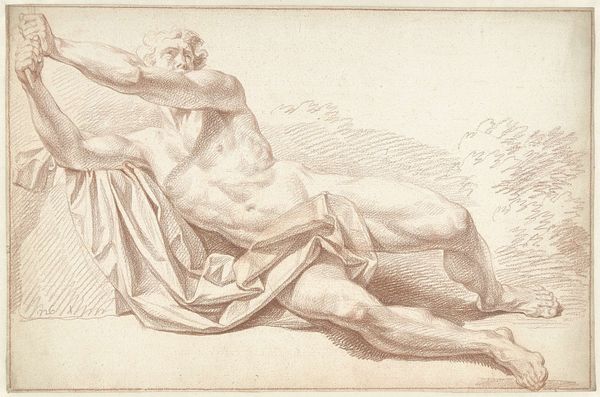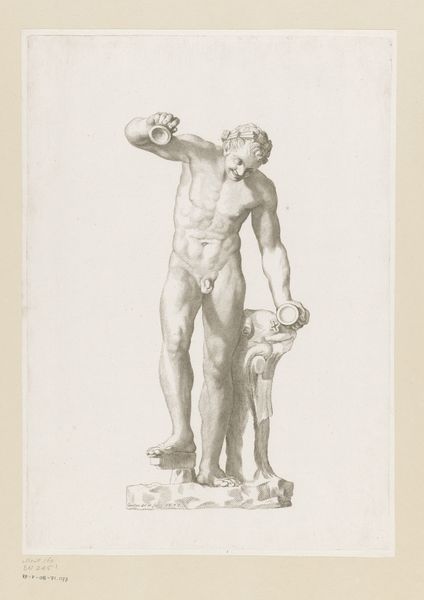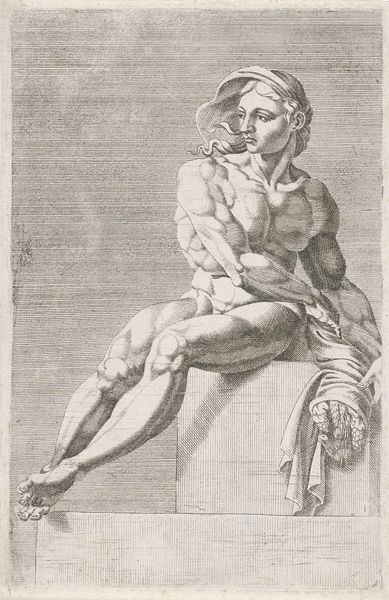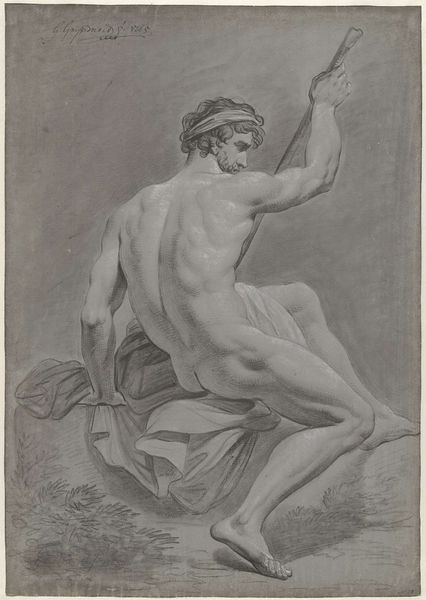
drawing, paper, ink
#
portrait
#
drawing
#
allegory
#
baroque
#
charcoal drawing
#
paper
#
ink
#
momento-mori
#
pencil drawing
#
portrait drawing
#
genre-painting
#
nude
Dimensions: height 232 mm, width 213 mm
Copyright: Rijks Museum: Open Domain
Jan de Bisschop created this drawing, Seated Nude Youth, using pen in brown ink with brown wash. It’s a drawing made in the Netherlands during the Dutch Golden Age, a period of immense economic and cultural growth. The drawing reveals the interest in classical art and anatomy during that time. The male nude, reminiscent of ancient Greek sculptures, rests against a sphere. Below him are skulls, a memento mori, reminding us of the inevitability of death. Bisschop was part of a movement advocating for classical art's central role in artistic education. He even produced instructional manuals with prints after classical sculptures, seeking to standardize artistic training. Understanding this drawing requires us to delve into the social and intellectual contexts of the Dutch Golden Age. We can examine art academies, publications on art theory, and collections of classical sculpture. The Rijksmuseum's archives are a great place to start. By studying these sources, we gain insight into the institutional forces that shaped artistic production and reception in Bisschop's time.
Comments
rijksmuseum almost 2 years ago
⋮
This is the central figure in a rather enigmatic composition by Michelangelo that since the 16th century has been known as Il Sogno, the dream. Various versions of Michelangelo’s drawing exist, not all of them by the master himself. That De Bisschop had reservations about the version he was copying is evidenced by the inscription on the etching (adjacent) that he later made of it.
Join the conversation
Join millions of artists and users on Artera today and experience the ultimate creative platform.
